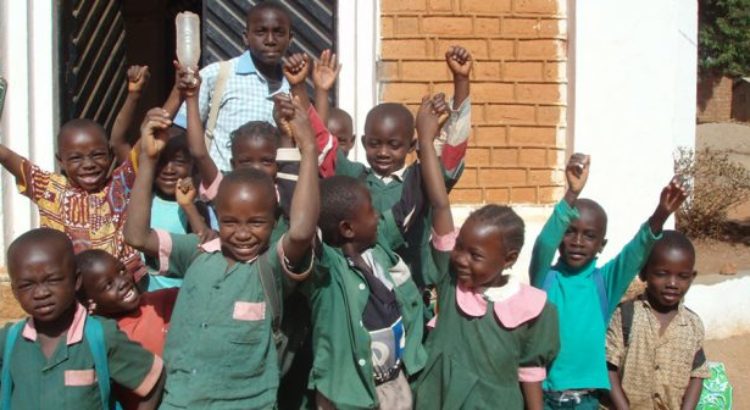Africa/09.07.18/By Sara Olk/Source: www.borgenmagazine.com.
Since the mid-1990s, several countries have abolished school fees in Africa for public primary education, responding to evidence that these costs were preventing impoverished children from being able to obtain an education. In the absence of school fees, enrollment rates in sub-Saharan Africa increased by 42 percent between 2000 to 2007; however, being able to provide high-quality education to this influx of new students has proven to be a new challenge for African schools.
School Fees in Africa a Declining Trend
School fees in Africa have their origin in the post-colonial period, when newly independent African countries created them to generate much-needed funds for their educational systems. Fees could manifest as tuition charges, payments for materials, or mandatory contributions to parent-teacher associations. In some countries, including Kenya, school fees were not officially required, but many schools would suspend children if their parents were unable to contribute. This was in large part due to low government funding, which left communities responsible for the majority of education costs.
As expected, impoverished children were disproportionately affected by these fees and the most likely to be unable to attend school. In Malawi, 33 percent of children from the poorest quintile attended primary school in 1990, in contrast to 75 percent of children from the richest quintile. On average, for the poorest 40 percent of households in the region, the annual cost of sending two children to school is more than 5 percent of their household income.
With the abolition of school fees, enrollment rates began to increase as impoverished children who had been excluded from the education system began attending school. After Malawi abolished school fees in 1994, 76 percent of children from the poorest quintile (versus 80 percent from the highest quintile) were attending primary school by 1997.
Countries Working to Address Other Issues Affecting Education
For many countries, including Kenya, Malawi and Mozambique, the abolition of school fees was a prominent campaign promise that newly-elected leaders felt obligated to follow through on. In both Kenya and Malawi, little time was spent on planning for this change; however, it was accompanied by more comprehensive education reforms and an increase in government funding.
Unfortunately, many education systems were unprepared for the number of new students they would be receiving after fee abolition. Student-teacher ratios increased dramatically — Ethiopia’s average student-teacher ratio in 2005 was 66 to 1, in contrast to 1995 when it was 33 to 1 — decreasing the quality of education at public schools.
Countries have been working to find a lasting solution to this problem with mixed success. In 2004, Kenya managed to prevent its national student-teacher ratio from exceeding 40 to 1 to strategically re-assigning teachers to districts with the most need, although in some provinces the average ratio was much higher. Malawi’s government hired 18,000 new teachers in 1994 after abolishing school fees, but most of these teachers were unqualified and student-teacher ratios were not significantly reduced. In Ghana, however, fee abolition was extensively planned for and the government effectively used grants to replace the money lost by no longer charging for tuition, allowing them to keep their student-teacher ratios low even as enrollment increased.
Additionally, after countries began abolishing school fees in Africa, many wealthier families moved their children from public schools to private systems because these schools could provide a higher quality education. This further disadvantaged education for poor children, as the rich were not as concerned with investing in and supporting public schools if their children were not attending them.
Initiative Focuses on Grants to Replace School Fees and Improve Education Quality
To assist in the process of abolishing school fees and creating strong, effective school systems, the School Fee Abolition Initiative (SFAI) was created by UNICEF and the World Bank in 2005. Its mission is to help countries work through problems that hinder the achievement of quality universal primary education.
Obstacles other than school fees continue to prevent many children from being able to attend school, including location and the need for children as household laborers. Poor rural families in particular are more likely to need their children to do chores at home, and even without fees cannot afford to send their children to school. It is imperative that the abolition of school fees in Africa be accompanied by other poverty alleviation programs and school reforms that include free food and reimbursements for families.
The SFAI has also found that involving communities in decisions about how school resources will be used helps empower these communities and creates stronger ties to the local education system, improving quality and administrative efficiency. It also recommends using capitation grants, which fund schools based on enrollment, as a way of creating stronger relationships between schools and communities and promoting quality improvement.
Moving forward, UNICEF and the World Bank argue that “resources must be directed at improving quality and meeting the needs of the very poor, those in distant rural areas and children with disabilities,” as well as girls, according to a U.N. article. Abolishing school fees in Africa is the first step of many towards creating school systems that provide high-quality education to all children.
Source of the notice: http://www.borgenmagazine.com/school-fees-in-africa/








 Users Today : 7
Users Today : 7 Total Users : 35459602
Total Users : 35459602 Views Today : 12
Views Today : 12 Total views : 3417984
Total views : 3417984